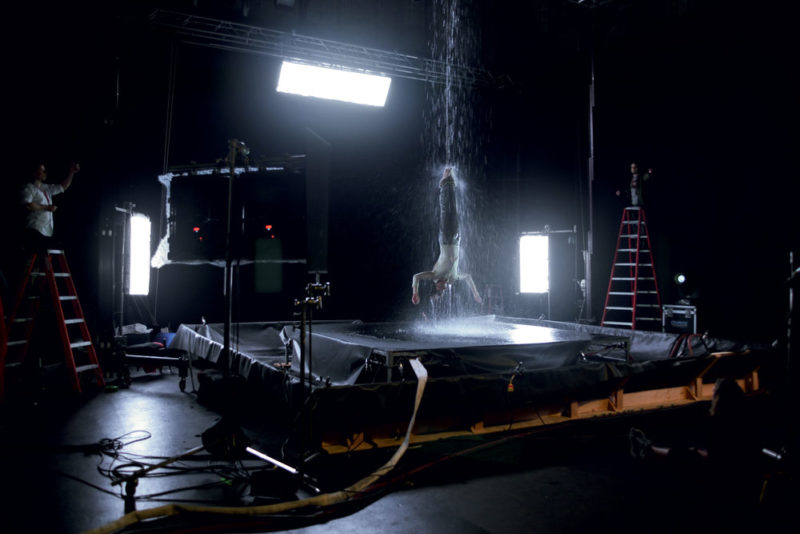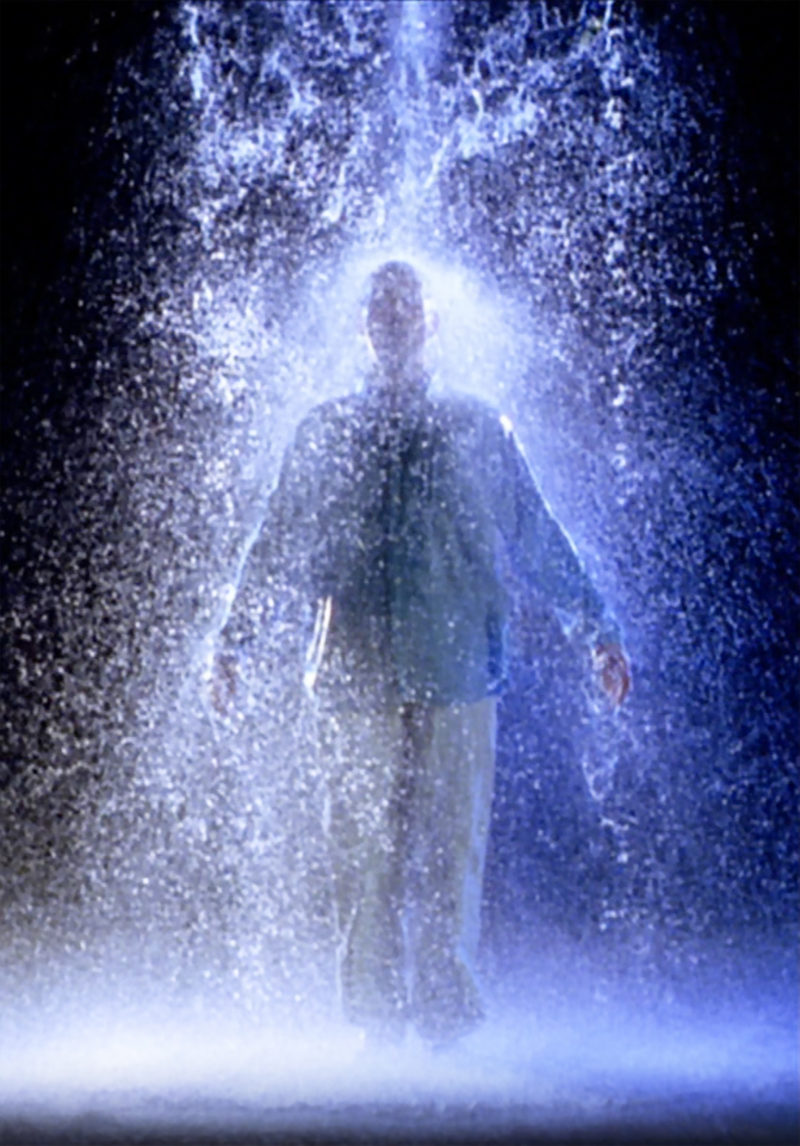
Background
Underlying Bill Viola’s 1 work over the past few decades has been the use of advanced media technologies for purposes of explaining and highlighting spiritual phenomena.
As a result of his immersive audio and video installments and environments, the artist manages to externalize the internal realm of the unconscious, supplying audiences with plenty of space for contemplation of the universe and its many mystical truths and happenings.
To do so, Viola makes use of modern media production methods that almost always include large scale projections, precise audio editing, loping, as well as slow motion.
Inspiration & Near-death experience
Viola’s deep and rich personal history divulges why his masterpieces almost always have feature water 2 as a theme in one way or another. When the artist was only six years old, he encountered an accident that caused him to fall out of a boat on of his family holidays.
Although the accident almost led to his drowning, Viola described the accidental experience as one of the most surreal and most beautiful that he had ever experienced in his life, which is completely different from what most drowning victims report.

Rather than being filled with fear and anxiety, Viola described the experience as being a peaceful one. This near-drowning encounter led to the artist’s fascination with water and why water is featured commonly in his various works. Typically, the artist used water as a metaphor.
According to the artist, water is a substance that reflects the external world while acting as a barrier to another. For the Crossing, the artist utilized a combination of water and fire, which is water’s natural enemy, which resulted in an interesting interaction between obverse elements.

Viola’s pioneering role
As early on as the 1970s, Bill Viola was one of the few artists to utilize new video technologies in his installations. As a young artist, he would frequently experiment with portable recording devices that allowed him to create short artistic performances that explored various themes and expressions.
As his career progressed, Viola was finally able to use multichannel and immersive installations 3 that consisted of carefully arranged screens and projections that would, in most instances, be displayed in a completely dark room. One such installation that followed this brief to the letter was The Crossing.

What happens in The Crossing?
Bill Viola’s The Crossing was a room-sized video installation that consisted of two massive sided screens onto which a pair of video arrangements were concurrently displayed. Each of the video arrangements opened similarly- a male figure was seen approaching the camera slowly.
The male figure’s body had been intensely illuminated from above, causing it to glow brightly against the video’s dark and dimly lit background. After several minutes, the male figure was seen pausing near the forefront before proceeding to stand completely still. The male figure then faced forward, staring motionless directly into the camera lens.

At this juncture in the installation, the large double-sided screens diverged. On one screen, a small fire was seen starting below the male figure’s feet. Slowly, the fire spread over the figure’s legs and torso before finally engulfing his entire body. The male figure’s arms moved slightly before it disappeared in the flames of the inferno.
On the opposite end of the screen, the same event occurred, only this time it featured water instead of fire. The water trickled slowly at first like a light rainfall before building up to form a cascade of water that covered the male figure completely. After both the inferno and the cascade of water disappeared, the figure was seen to disappear from both scenes leaving an empty and silent scene.

Analysis
The Crossing was designed to highlight Viola’s ability to manipulate filmic time. Like many of his previous works, The Crossing was filmed using high-speed equipment and devices capable of recording as many as 300 frames each second, which is what allowed him to attain such a great level of details that would otherwise be impossible to recognize with the naked eye.
Many of the effects were attained during post-production, where the artists reduced the speed of the playback to slow motion, which further helped to enhance the level of drama and the outstanding effect. The artist’s use of slow-motion in the installation was utilized to summon a thoughtful and reflective response from the audience.
Because of the slow motion, the audience was forced to concentrate for a longer period to increase one’s own awareness of the details and the changes taking place. The slow-motion effect is also what allowed time to open up in an interesting and unique manner.

Conclusion
The Crossing could easily be understood through the lens of folklore or religious thought. Through the course of his career, the artist was inspired heavily by an array of spiritual traditions, including Buddhism 4 and Sufism. In this case, the right of flames surrounding the male figure could be seen as the cause of a continuous cycle of destruction and creation.







